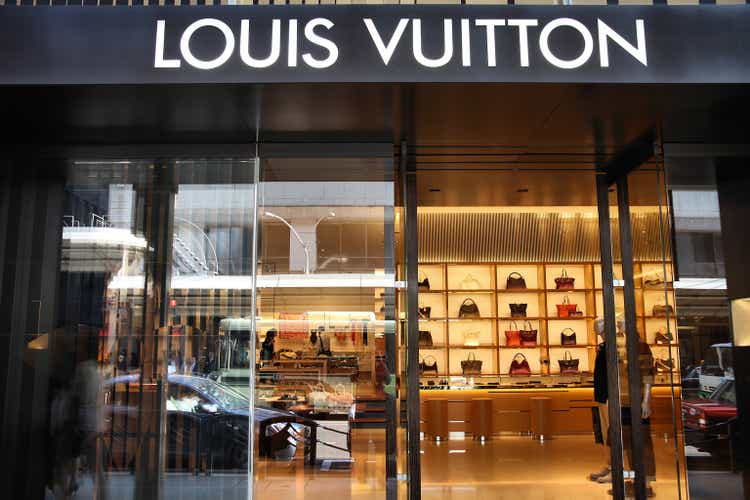
tupungato
Luxury goods makers could be in for a rude awakening as a luxury supercycle that has boosted many of their stock prices could be reaching its conclusion.
That’s the assessment from BMO, who has a not so rosy outlook on the sector. In a recent note, the firm provided five reasons why investors would be wise to be cautious.
The firm noted that its 2023 H2 estimates have consistently been below Street expectations. “We expect to see consolidation of strong multi-year gains for the luxury sector from here…also accounting for higher interest rates and lower disposable incomes for western consumers and a China macro situation that is not supportive.”
The European team covering luxury and premium brands lists just three stocks at outperform: LVMH Moet Hennessy (OTCPK:LVMHF)(OTCPK:LVMUY), Kering (OTCPK:PPRUF)(OTCPK:PPRUY), and Compagnie Financière Richemont SA (OTCPK:CFRHF)(OTCPK:CFRUY). Among sporting goods names, only Nike (NYSE:NKE) and Puma (OTCPK:PMMAF) have that rating.
EssilorLuxottica Société (OTCPK:ESLOF)(OTCPK:ESLOY) and Pandora (OTCPK:PNDZF)(OTCPK:PANDY) are rated by BMO as underperform.
As one of the five reasons, BMO notes that the size of the luxury market size is ~25% above 2019 levels, and recent growth rates are above longer term averages for most of the companies in the category. “This is not sustainable, and we expect moderating revenue growth trends from here.”
Next, while aspirational consumers have helped drive growth in recent years, their numbers are dwindling. BMO estimates that of the ~400m luxury consumers worldwide, 165M are aspirational, 200M are high income earners, and 25M are high net worth.
Third, while an equation of price + volume + mix has buoyed luxury companies of late, that equation is changing — and not in the companies’ favor. For example, from 2019-2022, Louis Vuitton (OTCPK:LVMHF) had a equation of +11% price, +3% volume, and +3% mix. For fiscal 2024, BMO sees +2-3% price, 0% volume, and +5-6% mix.
Fourth, luxury downturns have happened three times since 2010. They have, on average, lasted four quarters and have seen 12% share price declines. BMO notes this time may be different — and worse — given high interest rates, inflation, and China macro issues.
Finally, BMO said that macro headwinds are the worst in decades. “Average consumers have less residual income left over, which is likely to impact spending.”







